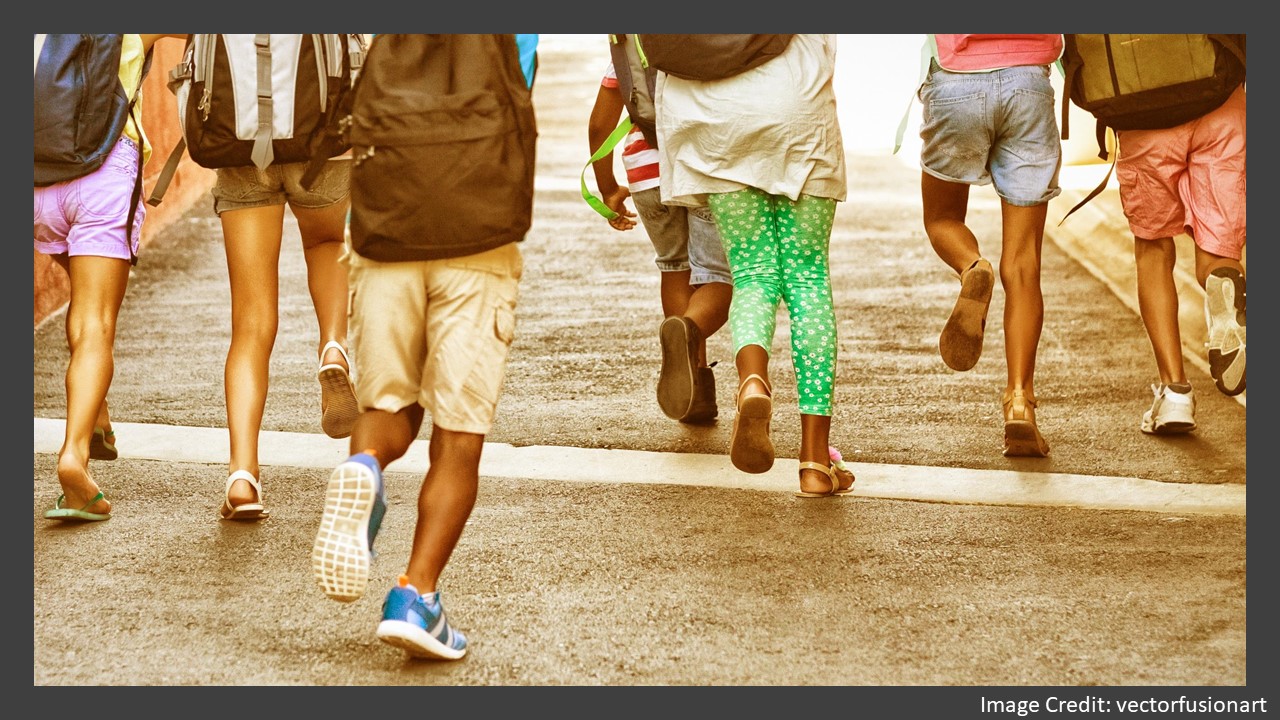
Teachers like creativity.
We want our students to learn what has come before, certainly. And, we want them to do and think and imagine new things with that prior knowledge.
We want them, in ways big and small, to create. How can we best foster such creativity?
Over the years, I’ve often heard that walking outside promotes creativity.
Because I work at a summer camp, I’m in favor of almost anything that promotes being outside. Alas, it turns out, this data pool didn’t hold up very well.
Since that time, lots of folks have focused on the walking part of “walking outside.” Several studies do suggest that simply walking around ramps up creative output. (For instance, here.)
Can we be more specific than “walking around”? Do some kinds of walking boost creativity more than others?
Defining Creativity
Ironically, the study of creativity begins with mundane, even tedious, tasks: defining and measuring it.
Researchers often focus on two kinds of creativity.
First, my students might come up with something new and useful.
Researchers measure this flavor of creativity (“divergent”) in a fun way:
Think about, say, a brick. Now, list all the things you might do with a brick.
The answer “build a wall” doesn’t score very high, because almost everyone says “build a wall.”
The answer “raise the water level in my pool by throwing lots of bricks in” does score high, because — well — because nobody ever says that. This answer is new and (assuming you care about the water level in your pool) useful.
Second, my students might see hidden connections.
Researchers measure this flavor of creativity (“convergent”) in another fun way:
Think about these three words: cottage, swiss, and cake.
Can you think of a word that pairs with each of those to make a meaningful phrase? (Answer: “cheese.” As in, cottage cheese, etc.)
Researchers in Germany wanted to know: what kind of walking might increase DIVERGENT creativity.
Here’s what they found…
It’s All About the Freedom
Researchers Supriya Murali and Barbara Händel asked participants to walk or to sit.
And, they asked them to do so in restricted or unrestricted ways.
Unrestricted walkers, for instance, could walk around a large room however they pleased. Restricted walkers had to walk back and forth down the middle of the room. (Notice: all this walking was inside.)
Unrestricted sitters sat in a solid chair (no wheels, no reclining features) with a view of the full room. Restricted sitters sat in the same chair, but with a computer screen in front of them. The “fixation cross” on the screen implied (if I understand this correctly) that the participants should remain focused on the screen.
What happened afterwards, when they took a test on divergent thinking?
Headlines:
Walkers scored higher on tests of divergent creativity than sitters.
Participants without restrictions (both walking and sitting) scored higher than their restricted peers.
For some interesting reason, unrestricted movement reduces restrictions in subsequent mental activity.
Classroom Implications
As I think about this research, it implies some happy, practical suggestions.
If we want our students to launch an explicitly creative assignment — start composing a poem, imagine an approach to studying a historical question, plan an environmentally-friendly city — we can give them an extra boost of physical freedom.
Walking outside might be good.
But if they can’t walk outside (that’s just not possible in many schools), then walking inside could be good.
Heck, if 25 students walking around in the classroom sounds like too much chaos, maybe they can choose a new place to sit for a while.
In other words: this research suggests that the actual movement (walking/sitting) matters, and that the relative degree of restriction also matters.
Even if students sit in solid chairs, their freedom to choose seats or move seats or sit cross-legged (or whatever) might jostle some creative energy in useful ways.
TL;DR
As long as we don’t make our claims too strong or grand, this research allows a sensible claim: “by reducing physical limitations for a while, we might help students expand their mental activity and creativity.” *
* I should note that the sample sizes in these three studies are quite small: 20, 17, and 23. Were these studies repeated with larger sample sizes (and/or in more classroom-like conditions), I’d be more confident and emphatic in drawing these conclusions.
Kuo, C. Y., & Yeh, Y. Y. (2016). Sensorimotor-conceptual integration in free walking enhances divergent thinking for young and older adults. Frontiers in psychology, 7, 1580.
Murali, S., & Händel, B. (2022). Motor restrictions impair divergent thinking during walking and during sitting. Psychological research, 1-14.





